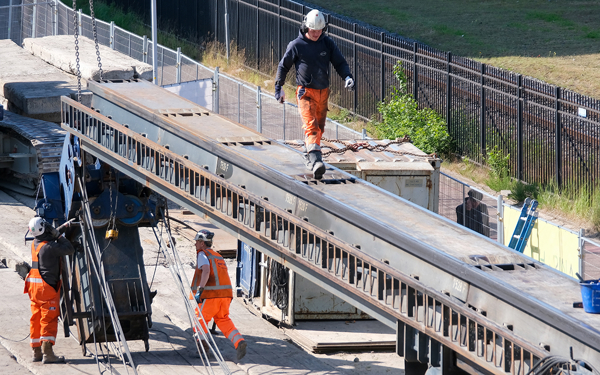Interview Klaas Knot with Nikkei
Klaas Knot spoke with Takerou Minami from Nikkei about monetary policy and financial stability. The interview was published on April 30th 2024.
Read more Interview Klaas Knot with NikkeiYou are using an outdated browser. DNB.nl works best with:
High inflation, though now receding, has had a strong impact on recent wage growth. However, higher wages generally do not fully pass through to prices, which suggests that the likelihood of a wage-price spiral emerging is low. This is shown in a new Analysis by DNB on the drivers of price- and wage growth in the Netherlands.
Published: 05 April 2024

© ANP
Dutch inflation is steadily falling towards the ECB’s 2% target rate, following a period of exceptionally high figures, with a peak of nearly 12% in 2022. Higher energy and food prices, in particular, rapidly drove up inflation because they make up a large part of consumers’ expenditures.
Rising inflation was detrimental to households’ purchasing power, as wage growth initially lagged far behind price increases. By 2023, however, more and more collective labour agreements saw higher wage growth, in response to higher inflation. An unprecedented tightening of the labour market following the pandemic was another driver of wage growth. In turn, higher wage growth led to further inflationary pressures. This interaction between price- and wage growth, which is in and of itself not unusual, prompted a DNB Analysis in 2022 on the risk of a wage-price spiral.
We recently took another look at the drivers of wage and price dynamics in the Netherlands, see this DNB Analysis from March 2024. Our findings confirm that there is a clear interaction between price and wage growth. Concerns about a potential wage-price spiral emerging, particularly in an environment of rapidly rising inflation, is therefore justified. It appears that the pass-through from inflation to wage growth is strong, and that this mainly works through the impact of short-term inflation expectations on wage growth. However, there is no similarly strong pass-through from wage growth to inflation. The latter could be explained by the fact that labour costs are not the only costs faced by firms and therefore not the only driver of firms’ price-setting decisions. In addition, companies may be able to absorb some of the higher labour costs into their profit margins. The results from our analysis indicate that the likelihood of a wage-price spiral emerging is low. Moreover, long-term inflation expectations remain stable at around 2% and have been unaffected by changes in actual inflation.
Despite these results, it is essential to continue to monitor wage trends. Many new collective labour agreements are still factoring in previous price increases. In other words, the pass-through from the inflation peak to wage growth is not yet complete.
If employers are too generous with wage hikes, they may have to pass on the costs in the prices of their products and services. And then workers will demand even higher wages to maintain their purchasing power, which in turn could further drive up prices. This economic phenomenon is referred to as a wage-price spiral.
Learn more here: Who is responsible for fighting inflation?.

Klaas Knot spoke with Takerou Minami from Nikkei about monetary policy and financial stability. The interview was published on April 30th 2024.
Read more Interview Klaas Knot with Nikkei
The growth of the labour force in the Netherlands is set to decline sharply in the coming decades. To meet this challenge, we need to look not only at increasing labour supply, but also at ways of reducing labour demand and improving the match between supply and demand.
Read more Tight labour market calls for broad public debate
The recent drop in energy prices pushed Dutch inflation down to the European average of 5.3% in July. However, core inflation (HICP excluding energy and food) remains higher in the Netherlands than in the euro area. One possible explanation is the more pronounced overheating of the Dutch economy.
Read more Falling energy prices mask high Dutch core inflation
The Dutch economy will grow by 0.8% this year, which is sharply lower than last year's 4.5% growth. While inflation is set to decrease, in part due to the economy cooling down, it remains too high at 4.2%.
Read more Economic growth slows, inflation remains persistentWe use cookies to optimise the user-friendliness of our website.
Read more about the cookies we use and the data they collect in our cookie notice.